Winter 2023
The Benefits of Urban Trees and Why the Best Time to Plant One is Today
by Hedwig Van Den Broeck
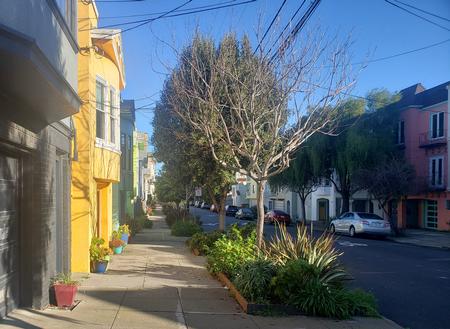
Don’t you feel like something is missing when you stroll or drive through a city street without trees? And when you do take a tree-lined street, doesn’t your journey seem much shorter and more enjoyable? When trees are around, we are much more likely to go outside. And even if we are unable to go outside, just looking out onto a green, tree-lined street makes us feel good. It makes us happier and healthier. There is no doubt that the presence of urban trees has a significant impact on the quality of our lives. Their benefits however reach much further than our wellbeing alone.
Without forests, life on earth would be unthinkable and unlivable. Our California forests are plentiful, diverse and have the ability of storing far more carbon dioxide (CO2) than urban trees can. There are however numerous threats to our California forests. “The greatest threat is not loss of forest due to harvesting and lack of subsequent regrowth but conversion to non-forests from serious catastrophic events, such as large wildfires, and land-use conversion to agricultural and residential land-uses” (UCANR California Forests.) In the Bay Area, the inland-oriented urban growth exploded not only due to the need to work from home but also due to land scarcity and high real estate prices.
The Urban Forest. Urban trees (aka street trees) refer to all public and privately owned trees within a metropolitan area.
https://ucanr.edu/blogs/blogcore/postdetail.cfm?postnum=43772
Urban trees are defined as trees growing on City-owned land in parks, medians and boulevards in streets, road rights of way, civic properties and natural areas.
Sadly enough, the density of CA Urban tree canopies has declined by 30% since 1988. (UC IPM webinar: Urban Trees for a Changing Climate presented by Janet Hartin.) Too often, large mature street trees that reach the end of their lives are substituted – if at all – with smaller species. These replanted trees then struggle to establish and reach maturity due to the constraints of the pavement surrounding them. Additionally, many of our urban trees have died or were eliminated due to climate change, wildfires, as well as drought related water restrictions. We need to find a sustainable balance between water conservation and ensuring trees are kept alive during restrictions to avoid die-off of mature street trees and losing their beneficial aid in keeping our environment healthy.
The main reasons for the decline in urban tree canopy cover are:
- Budget cuts. Many trees are seen as problematic due to high maintenance and upkeep with diminished resources.
- Population growth. More dense population, especially in less-wealthy neighborhoods with a large number of multi-family housing. These neighborhoods have an increased need for larger buildings and more parking space at the cost of greenspace. The rapid growth of cities often takes place with poor land-use planning strategies. The pressure of human needs (work from home, affordable housing, more and wider streets, more parking, etc.) often takes priority with highly damaging effects on the urban forest, landscapes, and green areas in and around cities.
- “The Right Tree in the Right Place” also applies to street trees. Often pests and diseases occur due to the wrong choice of tree species. An urban tree has different growing needs and requirements due to the more constrained planting location.
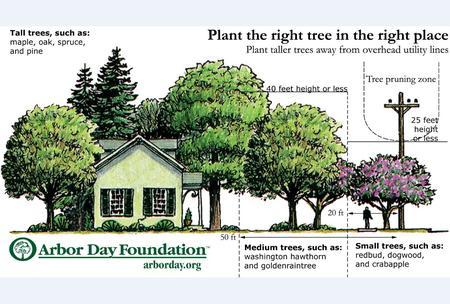
The benefits of urban trees reach much further than our well being alone:
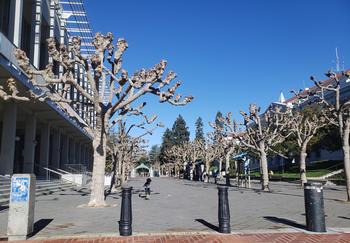
- Street trees offer aesthetic impact and seasonal interest to any urban setting. This can raise property values, encourage socializing, attract business and foot traffic. They are also highly effective at screening those vertical features to roadways that are needed for many safety and functional reasons, such as traffic and street lights, utility poles etc. Urban trees soften the look of wide streets, parking lots and industrial or large apartment buildings.
- Urban green spaces support wildlife too: birds, bats, bees, beneficial insects, and plants.
- A mature tree plays a vital role in climate change, improving air quality through photosynthesis where trees absorb carbon dioxide, store it and then return oxygen to the atmosphere. Trees reduce air pollution, trapping airborne particles, dust, and toxins. They also sequester carbon from the atmosphere, thus contributing a green solution to climate change.
- Trees absorb the first 30% of most precipitation through their leaf system. The moisture that hits the ground is either absorbed by the root system or percolates into the groundwater which reduces flooding potential and requires less maintenance of drainage systems. After rainfall, trees also filter toxins from the first flush of stormwater run-off, improving our water quality while tree roots keep the soil porous allowing stormwater absorption rather than draining into the sewers or water channels.
- A mature tree reduces energy usage as the shade from trees keeps walls and buildings cooler during the summer and reduces the urban heat island effect, where temperatures stay warmer longer due to the many heat absorbent surfaces in cities such as roads, footpaths, and buildings. During winter, a deciduous tree (which loses its leaves in the winter) can help keep buildings warmer when heat from the sun is more desired.
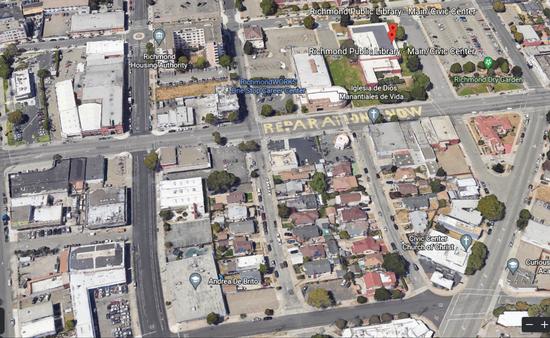
- Asphalt, concrete streets and parking lots are known to increase urban temperatures by several degrees. Unshaded asphalt can be 40 to 60 degrees higher than shaded asphalt! Your pets will definitely appreciate your choice of a shaded tree-lined street when you take them out for a walk. The presence of large trees and well-kept lower undergrowth vegetation has the power to transform barren areas into inviting, well-used locations.
Are you interested in adding a city tree? Careful planning is key.
- Always check with the city first and get involved with your community. Most – but not all – cities have either a street tree planning department or work closely with certified arborists. Some cities offer an approved list of street trees or you can download and submit a request form in case you’d like to add a street tree. If your request is granted, it is even possible that your new street tree will be planted and maintained free of charge, but the city will want you to help care for the tree the first few years until it becomes well established.
For example, to help with your selection, The City of Richmond has an extensive list accompanied with beautiful photographs that takes into account tree size (small, medium, large), whether it is a deciduous tree or an evergreen and whether it is suited under utility wires or for wet locations.
- It is important to study the location carefully; is there enough room for the tree to grow a healthy root system? It might be possible that some of the pavement will need to be removed to allow adequate space. The added benefit when removing pavement is that this might allow room for extra greenspace or maybe even a raingarden (*) or bioswale (**) that deals with water runoff and drainage.
- As topping trees is not a good practice, keep in mind the height at maturity of the tree so that it won’t interfere with power lines and other utilities.
- Locations that are too windy, wet, shady, and or sunny also need to be taken into consideration as this can interfere with the health and beauty of the tree.
- There are several microclimates in Contra Costa County and trees suitable for one area might not thrive in others. CA native trees have evolved in the local environment and typically offer more ecosystem services than non-native species. Walking around in your neighborhood and observing thriving street trees that you like in your area might help with your decision making and, like always, our Helpdesk will be happy to assist in selecting ‘the Right Tree for the Right Location’.
“Someone is sitting in the shade today because someone planted a tree a long time ago.” - Warren Buffett
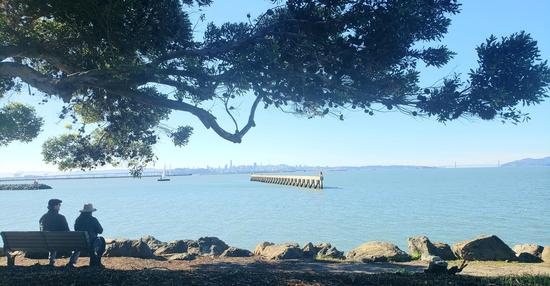
References and a few clarifications:
Igor's Urban Website! Igor Lacan is a University of California Cooperative Extension Advisor for the San Francisco Bay Area, specializing in urban forestry.
Urban Trees for a Changing Climate (UC IPM webinar presented by Janet Hartin)
https://ucanr.edu/blogs/blogcore/postdetail.cfm?postnum=50528
https://ucanr.edu/sites/forestry/California_forests/
https://acmg.ucanr.edu/Over_the_Fence/Selecting_Planting_Caring_for_Street_Trees/
https://ucanr.edu/blogs/blogcore/postdetail.cfm?postnum=43772
(*) Rain gardens are small, vegetated basins or depressions which capture and absorb runoff from roofs and sidewalks. By allowing water to infiltrate through the soil, they help treat pollution and recharge groundwater. If you use water-wise plants native to our area, they may even be self-sustaining as the plants will be watered by the captured runoff.
https://ccag.ca.gov/wp-content/uploads/2020/06/5.7-A2-Exhibit-B-BASMAA_Rain_Garden_Fact_Sheet.pdf
(**) Similar to rain gardens, bioswales are planted or mulched channels which slow water flow down and allow it to infiltrate into the soil. They are particularly useful along streets or in parking lots where they can redirect water from the curbside. When native water-wise plants are used, they may even self-sustain vegetation, reducing watering costs.
